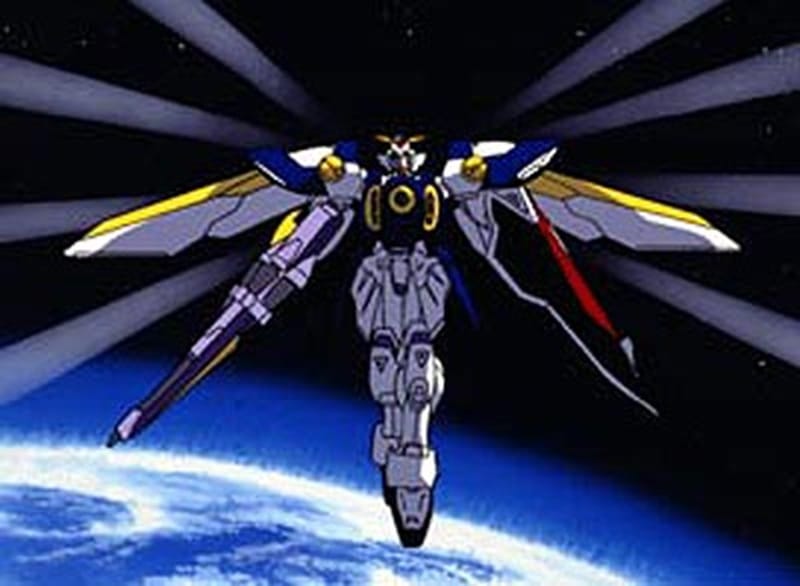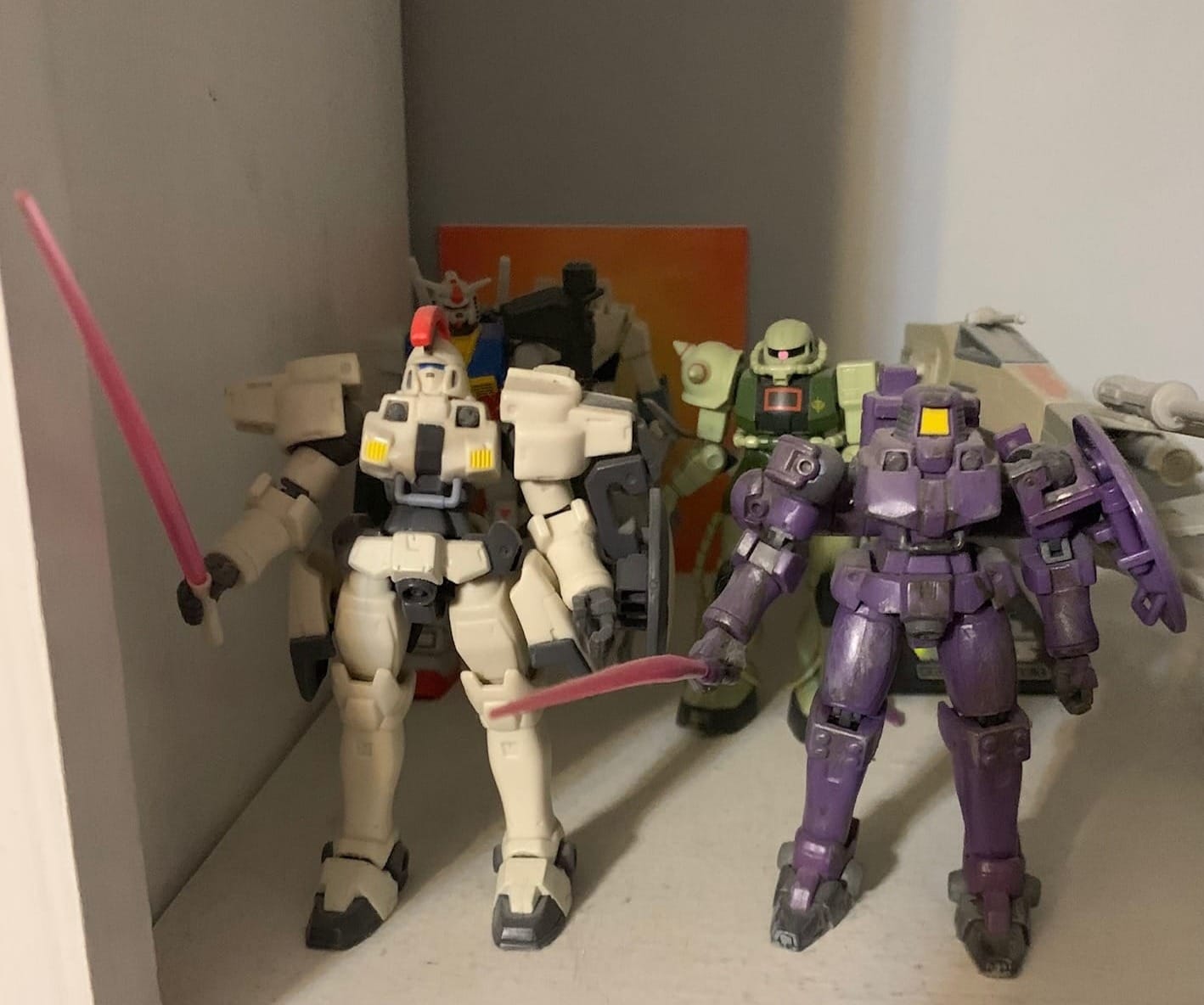I, like many a now middle-aged person growing up in the early 2000s, went through a phase when I was obsessed with anime. And, like many of that same group, my introduction to anime was Cartoon Network’s Toonami segment.
Toonami was a block of time every day when Cartoon Network would show nothing but Japanese animation. For countless North America viewers, it was the first time a lot of them had really been exposed to anime in any substantial way. There had always been people who enjoyed it, but Toonami changed the game. It went from being a hard-to-find niche product to after school cartoons that kids and teenagers could watch every day.
It wouldn’t be a stretch to say that world famous franchises like Dragon Ball Z wouldn’t have their American fanbases if Toonami hadn’t provided easy daily access.
For my own part, I wasn’t watching for Dragon Ball Z. I tuned in every day to catch the latest episode of Gundam Wing.

What in the heck is Gundam Wing?
Have you heard of Star Wars? While it’s not a perfect comparison, Gundam is to Japan what Star Wars is to North America. The original Gundam show, entitled Mobile Suit Gundam, first aired in 1979. While initial ratings were lackluster, model kits based on the series were monstrously popular.
Riding that wave of hobbyist success, the series eventually grew into a cultural icon. The original TV series, following a rag tag group of child conscripts piloting giant robots in a devastating future war, was recut into three movies; all of which were hits at the box office. The decades since have seen countless sequels, mini-series, movies, and spin-offs.
Gundam Wing falls into the spin-off category. While it follows many of the same themes as the original 1979 series, it takes place in a different universe and follows a different conflict. The story? After years of struggle, humanity has reached the stars and...
Actually, just watch the Toonami advertisement. It does a far better job summing it up than I ever could:
Narrated by Optimus Prime himself.
I can’t remember when exactly I watched Gundam Wing for the first time. What I do remember is being completely enthralled with it.
Mind you, it wasn’t the first anime I had ever been invested in, or even the first giant robot show I’d ever enjoyed. Robotech debuted on Cartoon Network almost two years before Gundam Wing, and I was definitely a fan of that too. For every moment of awesome mecha action, however, Robotech had just as much slapstick humor and soap opera romance. Gundam Wing? That was a serious show.
That’s how it felt when I was thirteen, at least. Gundam Wing is nothing if not packed full of characters pontificating about war, the meaning of war, the importance of fighting, the futility of fighting, the ideal of pacifism, and you name it. Its many monologues and speeches all seemed incredibly deep and philosophical when I was a teenager.
It also didn’t hurt that show was a pure power fantasy for adolescent boys. The bulk of Gundam Wing follows five colonial rebels - all of whom are teenagers, each with their own unique unstoppable death mecha. It’s an idea that practically sells itself.
And it did! Gundam Wing was an enormous hit for Cartoon Network. There was a period of time, in fact, when Gundam Wing was the most popular show on the channel. It led to countless toy and model kit sales. Most importantly, it launched the wider Gundam franchise as a popular property in North America.
I am far from the only pushing-40 person who still loves Gundam in its many form. I can trace my love of the franchise straight back to Gundam Wing.

Is Gundam Wing actually any good?
Anime series are often willing to explore themes and ideas that western cartoons won’t touch. While there are certainly American cartoons that “go there” (and plenty of anime that’s just fluff, as well), it’s a lot easier to find anime that dig into harder and headier topics.
The biggest problem with Gundam Wing, ironically, is that is has too many ideas for its own good.
The best Gundam shows are usually built around a strong central theme. The original 1979 series is as much an anti-war political drama as it is a giant robot show. More recent shows like Mobile Suit Gundam: Iron-Blooded Orphans and Mobile Suit Gundam: The Witch from Mercury explore issues like corporate greed, the exploitation of child labor, and generational trauma.
The themes of Gundam Wing are a lot harder to pin down. It is frequently anti-war, but also talks a lot about the “honor” and “beauty” of battle. It talks at length about the importance of pacifism, but also frequently rebuffs the idea that pacifism
is a realistic alternative to war. The only theme that really sticks the landing in Gundam Wing is “drone weapons are bad.” The rest of its points are muddled, at best, in their execution.
If there's one thing Gundam Wing REALLY believes in, it's that unmanned weapons are evil.
Some of this is because Gundam Wing has an expansive cast of characters and factions. You have the five main Gundam pilots, each with their own boy band-style personality and problems. You also have the Earth Sphere Alliance, the OZ organization, the space colonies, the Sanc Kingdom, the Romefeller Foundation, the Treize Faction, and the White Fang rebels. Each faction has its own cast of characters who, in turn, have their own goals, none of which have enough time to be fully fleshed out.
It doesn’t help that the writing and pacing are inconsistent. The first chunk of Gundam Wing's 49 episodes follows the titular Gundam pilots as they arrive on Earth and start wrecking OZ and its military forces. While there are some shaky moments as the show figures out who the characters are (especially main guy Heero), this section is a lot of fun.
About a quarter of the way through the show, however, the Gundam pilots get sidelined by the plot. They’re functionally passive characters for a lot of the rest of the show – pulled through the story by outside forces almost right up until the final conflict. They’re agents of chaos who never actually manage to change much.
Honestly? The most consequential character in Gundam Wing is the narrator. The show is full of twists and turns, many of which start up with an omnipotent voice saying “While this was going on, these guys over here were doing this! And now the world has changed again!"
Taken on the whole, Gundam Wing is not a story that’s told particularly well.
More Than the Sum of its Mobile Suit Parts
Even acknowledging Gundam Wing’s flaws, I’d be lying if I said I didn’t have a ton of fun re-watching it. I don’t think that’s just nostalgia talking either!
While its overarching story is often messy, Gundam Wing is still genuinely entertaining on an episode-by-episode basis. The characters can be weird and inconsistent, but they’re never anything less than engaging. Many of them also do undergo some genuine growth as the story progresses.
At the beginning of the series, Gundam pilot Heero Yuy is about as edge-lord a protagonist as you’ll find in anime. By the series’ end? He has believably grown into a (quietly) caring and sympathetic hero.
Heero mostly stops acting like a psycho after he blows himself up in episode 10.
The same can be said for Heero’s romantic interest Relina. When the show starts, she is two steps shy of Bella Swan – inexplicably and obsessively attracted to a guy who has threatened (and tried!) to kill her. By the time the final credits roll, she has believably transformed into a world leader and a symbol of pacifist ideology.
As shallow as it might sound, Gundam Wing also just straight-up rocks the whole “giant robots exploding” shtick.
The series was made on the cheap (relatively speaking). You could make a pretty dangerous drinking game out of “spot the repeat animation.” That being said, its mecha designs are some of the absolute best in any Gundam series ever made. More to the point? When the show really cuts loose and invests in its action scenes, they are absolutely top notch. They’re exciting, they look amazing, and they have honestly only gotten better with time.
A full minute of giant robot perfection.
I would say it’s just me turning into a curmudgeonly old man, but they literally don’t do animation the way they did back when Gundam Wing was being made. Hand-drawn cartoons are a wonder and I really do think modern Gundam series have suffered from relying more heavily on computer animation – whatever its benefits might be.
Lastly, the show makes masterful use of its musical score. Gundam Wing actually only has a handful of wholly original songs -composed by Kow Otani- at its disposal, but it never fails to employ them perfectly. The music Otani wrote for Gundam Wing ranges from somber and emotional to energetic and intense. Countless scenes that would be melodramatic or silly stick the landing because they hit the music hits the right note.
Gundam Wing also features some iconic opening theme songs among anime fans.
A Legacy of Fandom
Gundam Wing is not the best Gundam series. Not by a lot, in fact. Even with its problems, however, Gundam Wing accomplished something unique from all the other entries in its franchise. It opened an entire audience to a universe that previously been closed to them.
If someone were interested in getting into Gundam, there other are shows I’d direct them to first (Gundam 0080 is six episodes long and perfect). If you’re already inducted into the Gundam fandom, however, and you haven’t watched this alternate universe classic, you should! As long as you approach it with the right mindset and realistic expectations, you’ll have a good time. I certainly enjoyed revisiting it.

